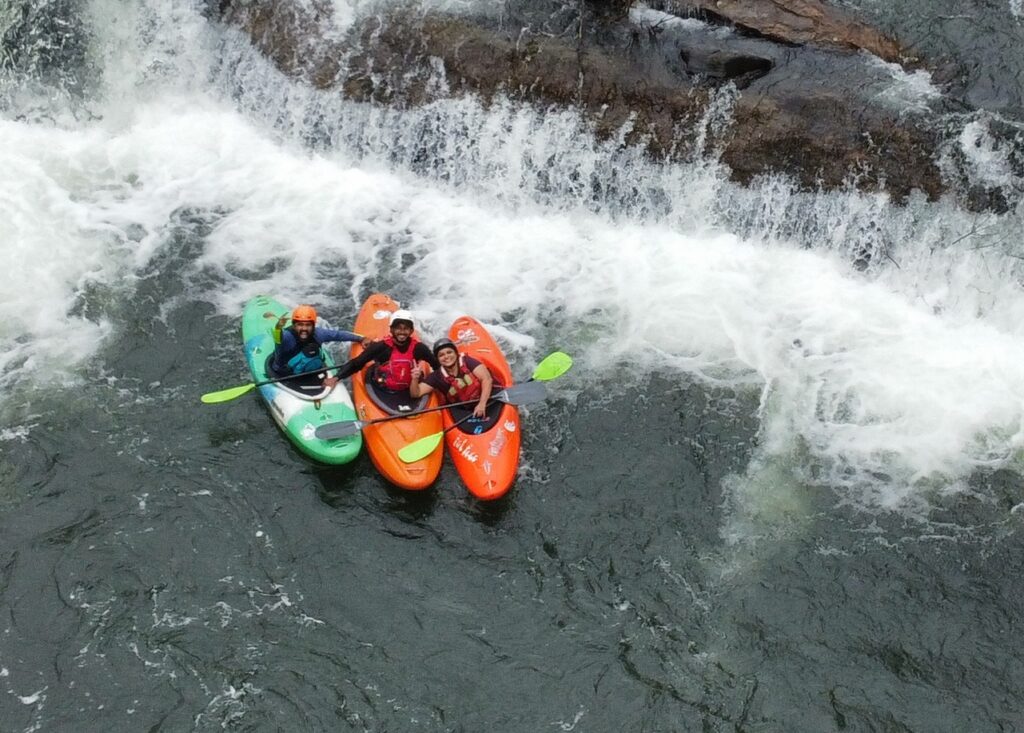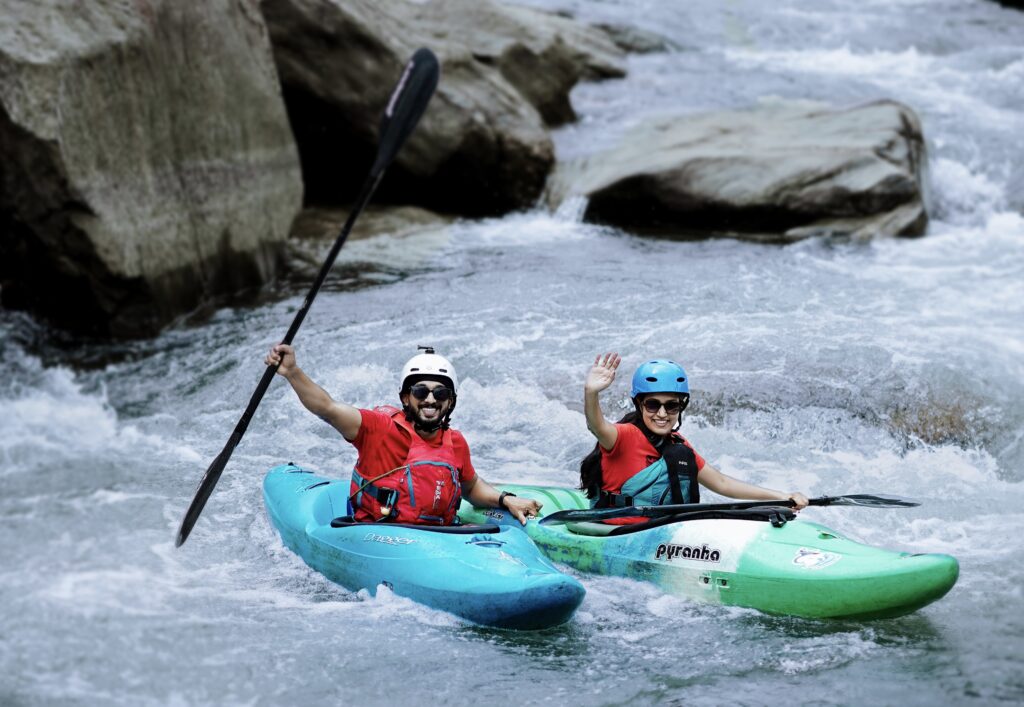White water kayaking is an invigorating water sport where participants navigate turbulent river rapids using specialized kayaks. Unlike leisurely flat water kayaking, white water kayaking takes place in challenging conditions, including rapid currents, waves, and obstacles like rocks and fallen trees. Paddlers require a blend of skill, strength, and agility to maneuver through these obstacles safely. Essential equipment for white water kayaking includes a durable kayak designed for turbulent waters, a robust paddle for control, a personal flotation device (PFD) for safety, a helmet for head protection, and a spray skirt to prevent water from entering the kayak. This thrilling sport offers adventurers the chance to connect with nature while experiencing an adrenaline rush. It promotes physical fitness, skill development, and memorable experiences amidst breathtaking natural landscapes. White water kayaking promises an exhilarating adventure for those seeking excitement on the water.

What is White Water Kayaking?
White water kayaking involves navigating through river rapids using a specialized kayak designed to withstand the forces of moving water. Unlike flat water kayaking, which typically takes place on calm lakes or rivers, white water kayaking challenges paddlers with varying degrees of turbulent water conditions, including rapids, waves, and obstacles like rocks and fallen trees.
The Equipment Needed for White Water Kayaking in kerala
To engage in white water kayaking safely and effectively, paddlers require specific equipment. This includes:
- Kayak: White water kayaks are typically shorter and more maneuverable than their flat water counterparts. They feature a rounded hull, upturned bow and stern, and often have added reinforcement for durability.
- Paddle: Specialized white water paddles are shorter and sturdier, allowing for better control and maneuverability in fast-moving water.
- Personal Flotation Device (PFD): A PFD is essential for safety, providing buoyancy in case of capsizing and helping the paddler stay afloat.
- Helmet: A sturdy helmet protects the paddler’s head from potential impact with rocks or other obstacles in the river.
- Spray Skirt: This waterproof covering seals the cockpit of the kayak, preventing water from entering and keeping the paddler dry.
Understanding the Different Classes of River Rapids
River rapids are classified based on their difficulty and level of challenge. The International Scale of River Difficulty categorizes rapids from Class I (easy) to Class VI (extremely difficult and dangerous). Each class represents specific characteristics and hazards, such as wave size, water volume, and obstacles. Paddlers can choose rivers and rapids suited to their skill level, gradually progressing as they gain experience and confidence.
The Joys of White Water Kayaking in kerala
White water kayaking offers a myriad of rewards beyond the adrenaline rush of navigating rapids. Paddlers are immersed in stunning natural landscapes, surrounded by towering cliffs, lush forests, and cascading waterfalls. The sport fosters a profound connection with nature, as paddlers learn to read the river’s currents and adapt their movements accordingly. Additionally, white water kayaking promotes physical fitness, requiring strength, agility, and balance to navigate the challenges of moving water.
Conclusion:
White water kayaking is a thrilling outdoor pursuit that captivates adventurers with its blend of excitement, skill, and natural beauty. Whether you’re a seasoned paddler or a novice seeking new experiences, exploring the rapids offers endless opportunities for adventure and discovery. With the right equipment, training, and respect for the river, white water kayaking promises unforgettable moments on the water and memories to last a lifetime.

